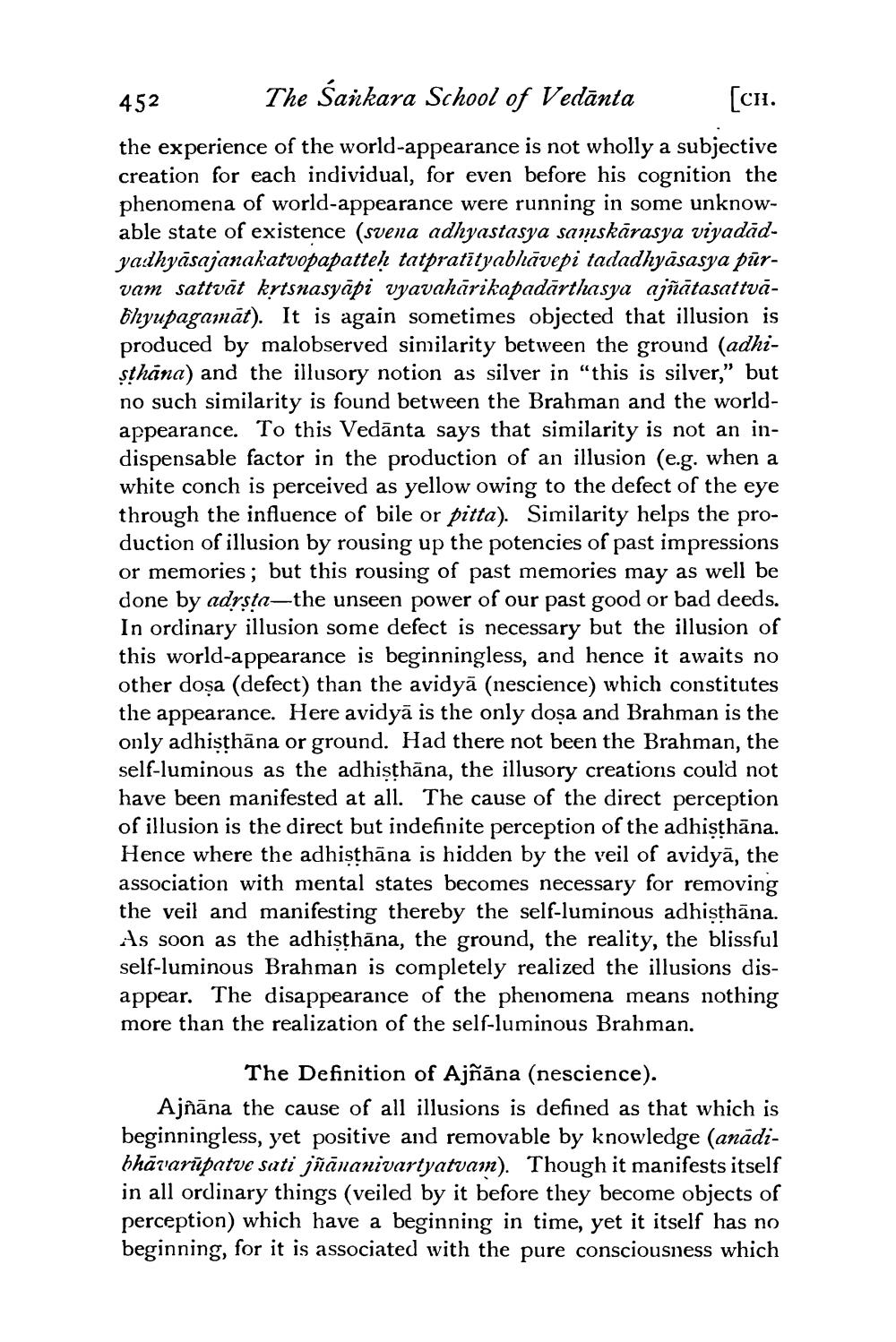________________
452
The Sankara School of Vedānta [cu. the experience of the world-appearance is not wholly a subjective creation for each individual, for even before his cognition the phenomena of world-appearance were running in some unknowable state of existence (svena adhyastasya samskärasya viyadādyadhyāsajanakatvopapatteh tatpratītyabhāvepi tadadhyāsasya pūrvam sattvāt kytsnasyāpi vyavahārikapadārthasya ajñātasattvaWhyupagamāt). It is again sometimes objected that illusion is produced by malobserved similarity between the ground (adhisthana) and the illusory notion as silver in "this is silver," but no such similarity is found between the Brahman and the worldappearance. To this Vedānta says that similarity is not an indispensable factor in the production of an illusion (e.g. when a white conch is perceived as yellow owing to the defect of the eye through the influence of bile or pitta). Similarity helps the production of illusion by rousing up the potencies of past impressions or memories; but this rousing of past memories may as well be done by adrsta—the unseen power of our past good or bad deeds. In ordinary illusion some defect is necessary but the illusion of this world-appearance is beginningless, and hence it awaits no other doşa (defect) than the avidyā (nescience) which constitutes the appearance. Here avidyā is the only dosa and Brahman is the only adhisthāna or ground. Had there not been the Brahman, the self-luminous as the adhisthāna, the illusory creations could not have been manifested at all. The cause of the direct perception of illusion is the direct but indefinite perception of the adhisthāna. Hence where the adhisthāna is hidden by the veil of avidyā, the association with mental states becomes necessary for removing the veil and manifesting thereby the self-luminous adhisthāna. As soon as the adhisthāna, the ground, the reality, the blissful self-luminous Brahman is completely realized the illusions disappear. The disappearance of the phenomena means nothing more than the realization of the self-luminous Brahman.
The Definition of Ajñāna (nescience). Ajñāna the cause of all illusions is defined as that which is beginningless, yet positive and removable by knowledge (anādibhāvarūpatve sati jñānanivartyatvam). Though it manifests itself in all ordinary things (veiled by it before they become objects of perception) which have a beginning in time, yet it itself has no beginning, for it is associated with the pure consciousness which




